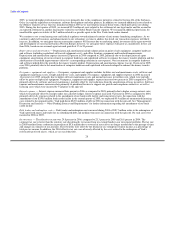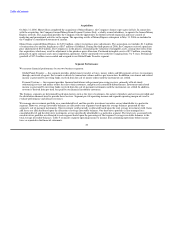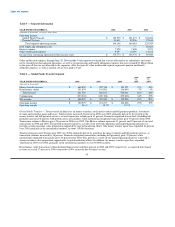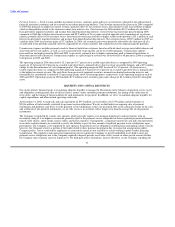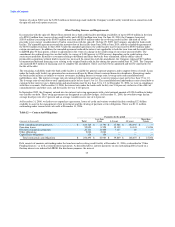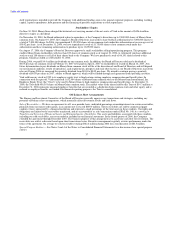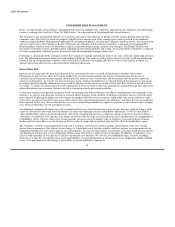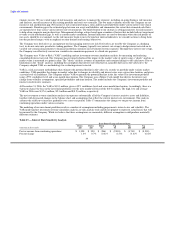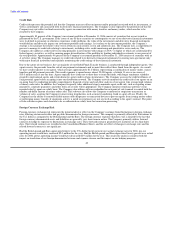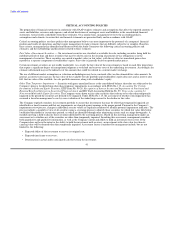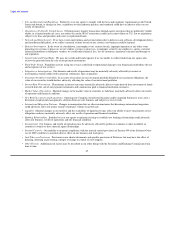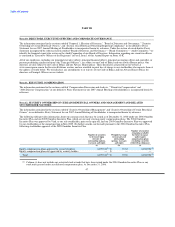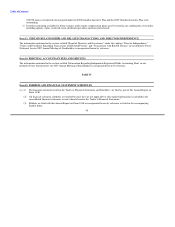MoneyGram 2006 Annual Report Download - page 41
Download and view the complete annual report
Please find page 41 of the 2006 MoneyGram annual report below. You can navigate through the pages in the report by either clicking on the pages listed below, or by using the keyword search tool below to find specific information within the annual report.
Table of Contents
ENTERPRISE RISK MANAGEMENT
Risk is an inherent part of our business, including interest rate risk, liquidity risk, credit risk, operational risk, regulatory risk and foreign
currency exchange risk. See Part 1, Item 1A "Risk Factors" for a description of the principal risks to our business.
The Company's risk management objective is to monitor and control risk exposures to produce steady earnings growth and long-term
economic value. The extent to which we properly and effectively manage each of the various types of risk is critical to our financial
condition and profitability. Management implements Board approved policies covering the Company's funding activity, investing activity
and use of derivatives. The Company's Board of Directors has a Finance and Investment Committee, consisting of five independent
Board members, which oversees its investment, capital, credit and foreign currency policies and strategies. The Board's Finance and
Investment Committee receives periodic reports regarding the investment portfolio and results. An Asset/Liability Committee, comprised
of senior management, routinely reviews investment and risk management strategies and results.
Following is a discussion of the strategies used by the Company to manage and mitigate interest rate risk, credit risk and foreign currency
risk. The following discussion contains forward-looking statements. The analyses used to assess interest rate risk, credit risk and foreign
currency risk are not predictions of future events, and actual results may vary significantly due to events in the markets in which we
operate and certain other factors as described in the following discussion.
Interest Rate Risk
Interest rate risk represents the potential reduction in net investment revenue as a result of fluctuations in market interest rates.
Fluctuations in interest rates affect the revenue produced by our investment portfolio, the amount of commissions that we pay to
customers in our Payment Systems segment, the net proceeds from our sale of receivables and the amounts that we receive under our
interest rate derivatives. As a result, our net investment revenue, which is the difference or "spread" between the amount we earn on our
investment portfolio and the commissions we pay and the discount on the sale of receivables, net of the effect of interest rate derivatives
or "swaps," is subject to interest rate risk as the components of net investment revenue are not perfectly matched through time and across
all possible interest rate scenarios. Interest rate risk is concentrated in the investment portfolio.
Certain investments in our portfolio, primarily fixed-rate mortgage-backed investments, are subject to prepayment with no penalty to the
borrower. As interest rates decrease, borrowers are more likely to prepay fixed-rate debt, resulting in cash flows that are received earlier
than expected. Replacing the higher-rate investments that prepay with lower rate investments could reduce our net investment revenue.
Conversely, an increase in interest rates may result in slower than expected prepayments and, therefore, cash flows that are received later
than expected. In this case, there is risk that the cost of our commission payments may reprice faster than our investments and at a higher
cost, which could reduce our net investment revenue.
An additional component of interest rate risk is market risk that arises from fluctuations in interest rates that may result in changes in the
values of investments and swaps. Rate movements can affect the repricing of assets and liabilities differently, as well as their market
value. Stockholders' equity can also be adversely affected by changing interest rates, as after-tax changes in the fair value of securities
classified as available-for-sale and after-tax changes in the fair value of swaps are reflected as increases and decreases to a component of
stockholders' equity. The fair value of our swaps generally increases when the market value of fixed rate, long-term debt investments
decline and vice versa. However, the changes in the fair value of swaps and investments may not fully offset in stockholders' equity.
The Company's strategy in managing interest rate risk is to deliver consistent net interest margins and economic value over varying
interest rate environments. One element to our strategy is to purchase assets that have similar cash flow patterns to our payment service
obligations through time and various interest rate environments. To carry out this strategy, we purchase assets that match the average life
and duration of our payment service obligations within a range that achieves stable net interest margins. In addition, we purchase assets
across a wide spectrum of average lives to achieve the desired asset duration. We also use several different types of assets, including
derivatives, to alter the average life of our assets and liabilities to match the duration of our payment service obligations within a desired
range. A second element to our strategy is to regularly assess the portfolio's exposure to
38


